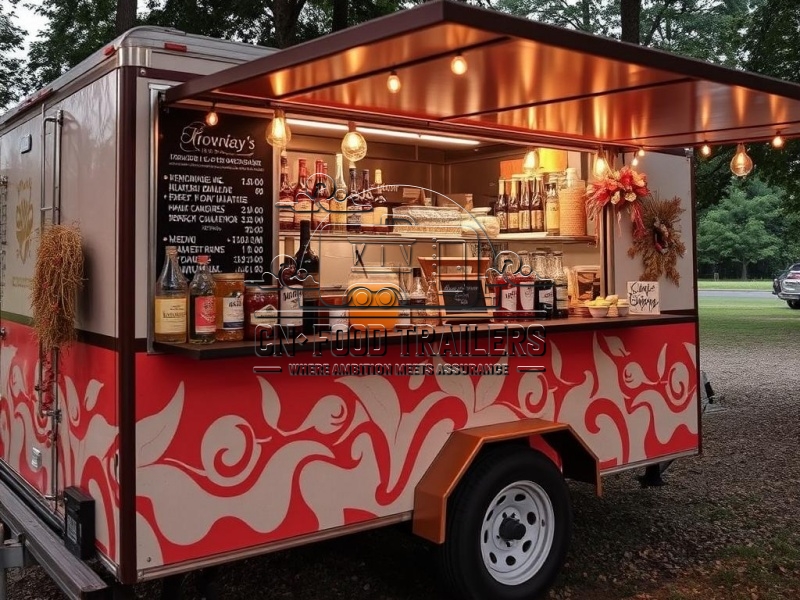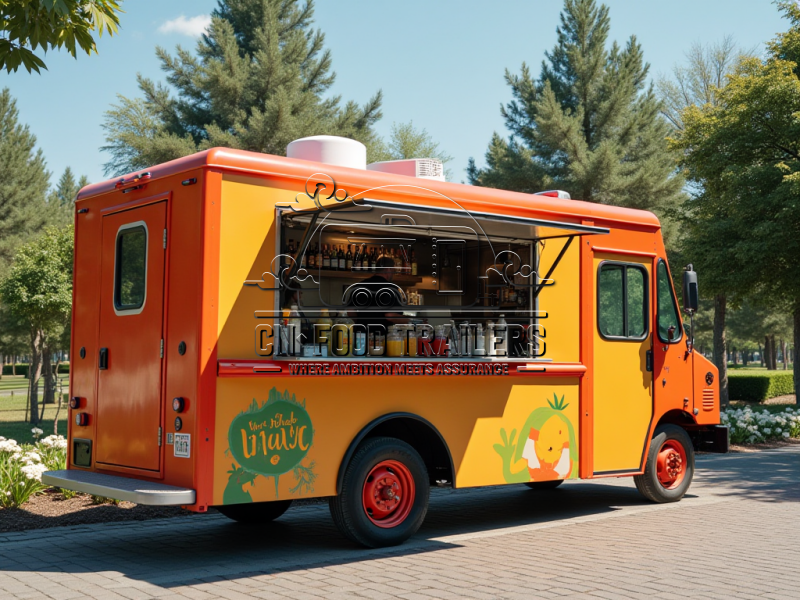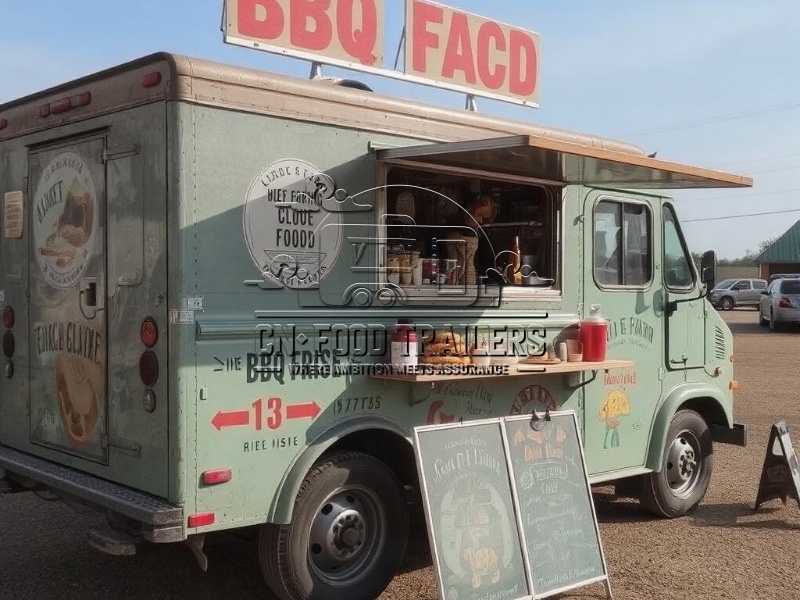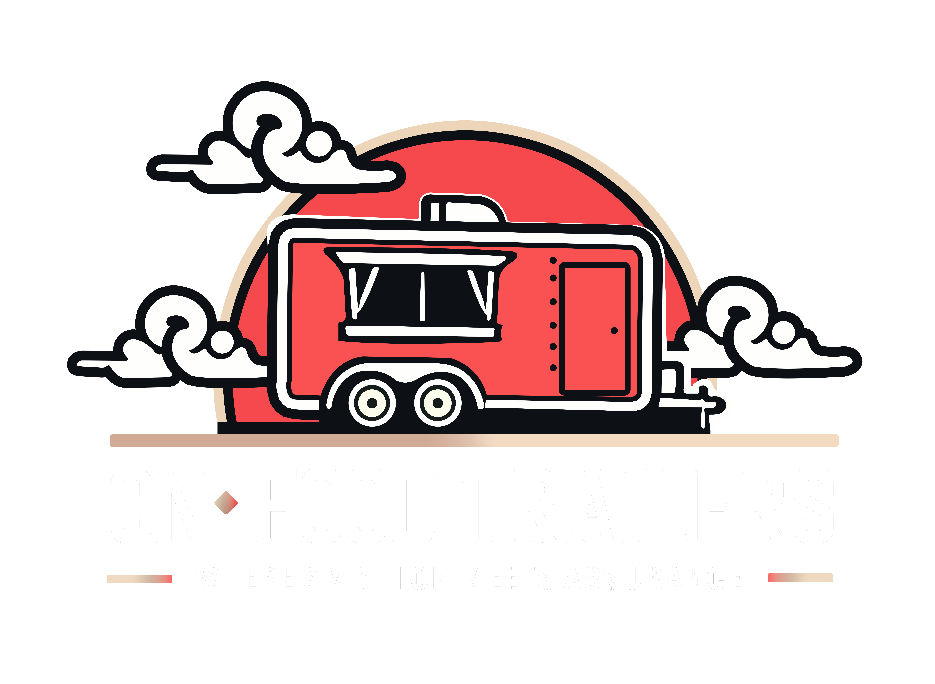In the fast-paced urban life, Sushi Food Trucks are sweeping the streets around the world with the core concept of “fresh, convenient, and interactive”. From Manhattan, New York to Shibuya, Tokyo, these mobile kitchens that combine Japanese aesthetics with modern technology not only break the space limitations of traditional sushi restaurants, but also redefine the boundaries of light food consumption through scene-based experience.

Core Features
1.Transparent Production Theater
- The 360° panoramic glass window fully visualizes the sushi chef’s cutting and kneading process. Customers can watch the precise cutting of the tuna belly, the golden ratio of vinegar and rice, and even customize their own sushi rolls (such as “Spicy Mango Salmon Roll”) in real time to enhance their sense of participation and trust.
2.Intelligent temperature control system
Three-zone refrigerators with independent control
- 0-4℃: Storage of fresh sashimi and sashimi-grade ingredients;
- -18℃: Frozen seaweed and spare sushi rice;
- 25-30℃: Insulated freshly cooked miso soup and steamed tea bowl.
The temperature is monitored in real time through the IoT sensor, and an alarm is automatically issued when abnormal and the spare refrigeration module is activated.
3.Extreme speed meal delivery mode
- The pretreatment system completes the rice seasoning, sashimi slicing and other processes in advance, and is equipped with an automated sushi roll machine (which can make 8 rolls per minute) to achieve an efficient process of “30 seconds to order – 2 minutes to serve”, with a peak daily production capacity of 500 servings.
4.Zero-waste supply chain
- The “freshness management system” directly connected to the local fishing port requires that the fish should not exceed 12 hours from fishing to loading; the remaining ingredients are promoted at a low price in the form of “blind box packages” through the APP, and the loss rate is controlled within 3%.
Internal equipment
1.Ingredient processing area
- Ultrasonic cleaning machine: Use high-frequency vibration to remove parasites on the surface of raw fish, replacing traditional salt water soaking;
- Vacuum low-temperature slow cooking machine: Cook egg rolls and hot spring eggs in a 55℃ constant temperature water bath to ensure a dense taste;
- Smart slicer: The laser positioning system achieves 0.1mm precision thin slicing of salmon and tuna.
2.Core production area
- Vinegar rice quantitative dispenser: The weight of rice for each sushi is accurately controlled by the spiral propeller (18±1g);
- Pneumatic sushi pressing mold: 10 types of molds can be replaced to quickly make creative sushi such as square and heart shapes;
- UV-C sterilization conveyor belt: The finished product is exposed to ultraviolet light for 3 seconds to extend the shelf life.
3.Customer interaction area
- Dual-screen ordering system: The left touch screen displays 3D food model and allergen information, and the right screen displays the production progress and pick-up code;
- Self-service seasoning station: Provides 8 kinds of Japanese sauces (such as yuzu pepper, wasabi paste) and edible gold foil and other decorations;
- AR menu: Scan the QR code of the dining car to watch sushi culture short videos and unlock hidden dishes.
4.Operation support area
- POS-ERP integrated system: Automatically generate sales heat map and cost analysis report, and connect to takeaway platforms such as Uber Eats;
- Mobile water circulation device: Daily water consumption is only 200 liters, meeting 48 hours of continuous operation requirements;
- Emergency power supply cabin: Equipped with 20kWh lithium iron phosphate battery, it supports the operation of the entire vehicle equipment for 6 hours.
Application
1.High-end business district
- For white-collar gathering places such as Lujiazui and Wall Street, the “subscription sushi box” service is launched: companies reserve weekly packages in advance, and the dining car is delivered on time every day to solve the difficulty of choosing lunch in the office.
2.Cultural and tourism integration scene
- In tourist hubs such as Kiyomizu Temple and Kyoto Station in Kyoto, dining cars are transformed into “mobile cultural experience stations”: tourists can wear kimonos and take photos with sushi chefs, and buy limited edition “Sakura sushi” as souvenirs.
3.Sports events and music festivals
- Its rapid deployment capability (venue construction completed in 45 minutes) makes it a standard for the Super Bowl and Coachella Music Festival. Through the “Sushi + Sake” package combination, the average customer price has increased to 25-30, and the gross profit margin has reached 65%.
4.Healthy diet community
- Cooperate with CrossFit gyms and yoga studios to customize low-calorie sushi (such as replacing rice with cucumber slices) and pair it with cold-pressed juice to attract fitness people.
5.Emergency relief response
- Remodeled as a “mobile nutrition station”, it provides high-protein sushi packages to disaster victims during earthquakes and floods, and has participated in rescue operations such as the Kumamoto earthquake in Japan and the Turkey earthquake.






Leave A Comment